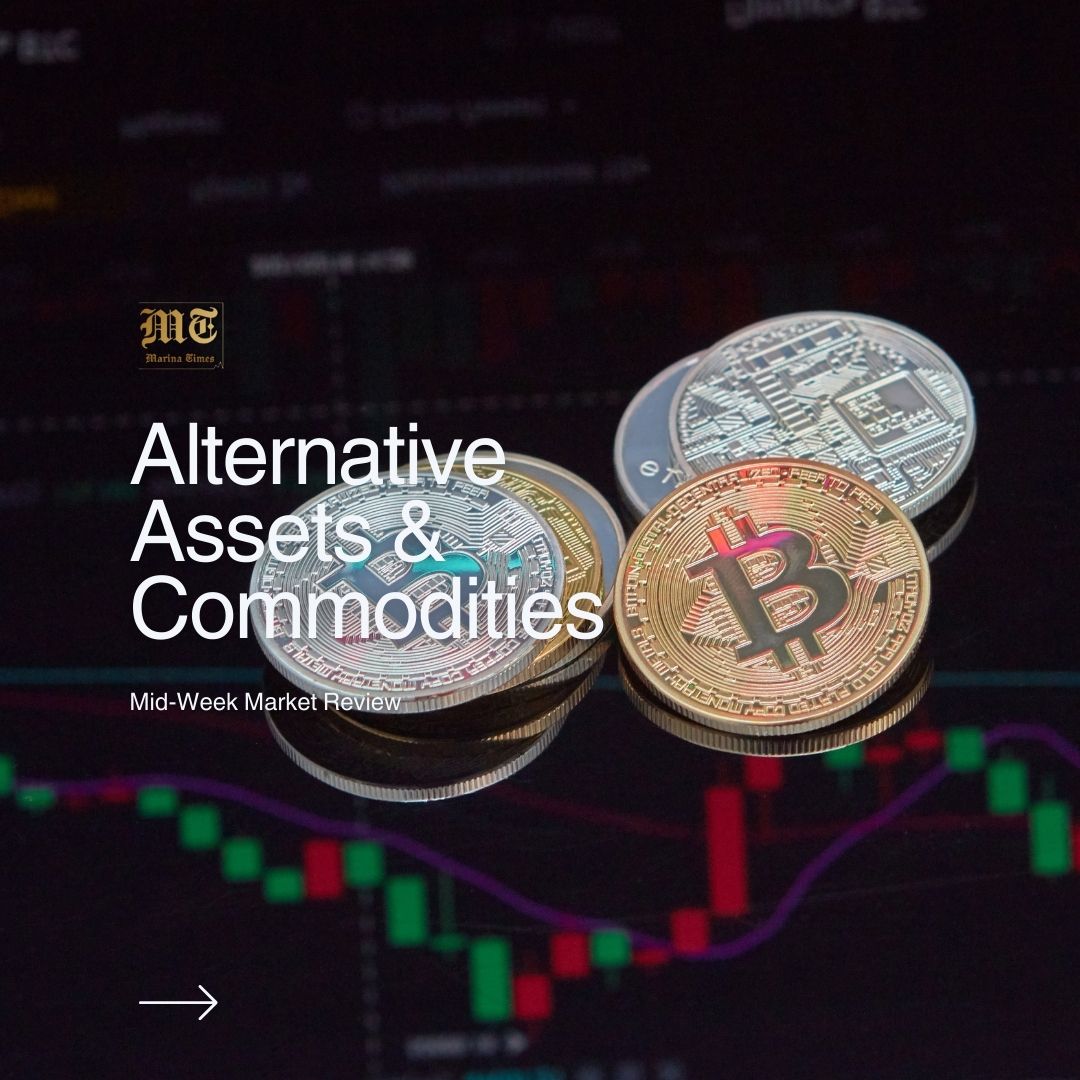

Crude prices climbed over 1% on Friday, lifted by US Energy Secretary Chris Wright’s remarks hinting at a possible chokehold on Iranian oil exports, a move tied to the United States’ stance on Tehran’s nuclear ambitions.
Brent closed at $64.59 a barrel, up 93 cents, while WTI rose $1.11 to $61.48. Yet, these daily gains were insufficient to offset broader losses. The market saw Brent slip 2.23% over the week, and WTI fell 1.35%.
The week had been shaped by a storm of trade policy shifts. The US President introduced a new tariff scheme, temporarily sparing several countries, but not China. The delay did little to calm traders, who are still digesting the wider implications for global trade and energy demand. Markets fear that the ongoing US-China tension could throttle trade flows, slow growth and weaken oil demand.
The Energy Information Administration (EIA) downgraded its global economic growth outlook and slashed oil demand forecasts for this year and next. It warned that prolonged trade friction could suppress prices further.
Monday saw a mild rebound on oil. The tariff exemptions offered some relief, while China’s oil imports surged, suggesting refiners are hedging against potential shortfalls from Iran. Brent edged up 23 cents to $64.82, and WTI ticked up 5 cents to $61.53.
China’s March crude imports jumped nearly 5% year-on-year, snapping a two-month slump. The boost came largely from increased Iranian shipments and renewed Russian flows. Meanwhile, diplomats from Washington and Tehran met in Oman, describing talks as ‘positive,’ with plans to reconvene.
OPEC’s latest report cast a cautious tone. The group trimmed its oil demand forecast for 2025 by 150,000 barrels per day to 1.3 million bpd. The outlook for 2026 was also revised down to 1.28 million bpd. Tariffs and global economic headwinds heavily influenced these revisions.
OPEC also pared back its global GDP growth estimates to 3.0% for 2025, down from 3.1%, and 3.1% for 2026, revised from 3.2%. While previous reports maintained a relatively optimistic stance, the latest figures reflect a more measured view, acknowledging the destabilising effect of protectionism on global markets.
Despite the trimmed forecasts, OPEC remains on the bullish end of demand projections. In contrast, the International Energy Agency (IEA) is preparing for a slower growth future. The agency anticipates oil demand will peak this decade as the energy transition accelerates. Its updated figures are due imminently.
Supply-wise, OPEC+ output dipped in March by 37,000 bpd to 41.02 million bpd, largely due to cuts from Nigeria and Iraq. However, production began rising again in April and is set to increase further in May, following plans to ease back earlier cuts.
Not everyone is following the script. Kazakhstan raised production by 37,000 bpd in March, bringing output to 1.852 million bpd, well above its agreed ceiling of 1.468 million bpd.
By Tuesday, oil prices stabilised. Brent settled almost flat at $64.89, and WTI hovered at $61.53. Market sentiment remains tethered to the US’ unpredictable tariff decisions and concerns about their knock-on effect on demand.
The IEA now expects global oil demand to rise by just 730,000 bpd in 2025, the slowest pace in five years, excluding the pandemic period. This figure is down 300,000 bpd from last month’s forecast. Growth is projected to decelerate further to 690,000 bpd in 2026. The drop comes despite robust Q1 figures, which posted the strongest annual increase since 2023.
Specifically, US oil production is now forecast to rise by 490,000 bpd this year, after the IEA trimmed expectations by 150,000 bpd. The cut is largely blamed on retaliatory tariffs from China targeting US ethane and LPG.
Amid global market turbulence, Nigerian crude made a notable record. On Tuesday, the average price of Nigeria’s crude hit $68 per barrel, which is about $4 above Brent. The country’s premium remains intact, despite the wider market jitters.
As mid-week trading began, Brent opened at roughly $64 a barrel, with markets bracing for the next round of data, diplomatic developments or potential disruptions.
Over the last week, Bitcoin (BTC) and Ethereum (ETH) saw wild swings. BTC dipped to $74,000 amid US-China trade tensions and tariffs, but rebounded to around $82,000 after Trump paused some tariffs for 90 days. ETH struggled more, hitting a low of $1,400, its weakest in years, down 77% against BTC due to macro pressures and sentiment, though it climbed back to $1,600 by April 15.
A false tariff pause report on April 7 spiked both (BTC to $80,800, ETH to $1,608) before a quick correction. Meanwhile, Ethereum co-founder Vitalik Buterin’s advocacy for Web3 privacy, potentially boosted ETH’s long-term outlook. The US inflation dropping to 2.4% fueled optimism, lifting BTC 7.5% and ETH 11% on April 11. Reactions across different social media platforms show mixed vibes, some see BTC strength, and others note ETH outflows. No major losses were recorded, but volatility remained the dominant theme.
On April 15, 2025, at exactly 07:25 PM WAT, a significant network outage at Amazon Web Services (AWS) disrupted operations across major cryptocurrency exchanges, notably Binance and KuCoin. This event underscores the critical reliance of the crypto industry on centralised cloud infrastructure and its potential vulnerabilities.
Immediate Impacts on Platforms
Binance suspended withdrawals for approximately 23 minutes due to transaction failures, attributing the issue to a ‘temporary network interruption’ in AWS’s data centre.
An X post from Binance confirmed the issue, noting that while some orders succeeded, others failed, advising users to retry if necessary. Services gradually recovered, with withdrawals reopening, though some users reported lingering trading issues.
KuCoin reported temporary disruptions, with their technical team working on fixes, and assured users that their assets and data were safe.
Public communications via a social media post emphasised the temporary nature of the disruption and advised users to stay tuned for official updates, cautioning against misinformation.
The outage extended beyond Binance and KuCoin, affecting other platforms such as MEXC, Rabby and DeBank, which reported issues like abnormal chart displays, delays in asset transfers and complete service unavailability.
Broader Effects on the Crypto Space
This AWS outage reignited significant debate within the cryptocurrency community regarding the industry’s reliance on centralised cloud providers. The incident underscored the risks of such dependence, with critics questioning why platforms like Binance, given their scale, still rely on AWS rather than dedicated infrastructure.
The outage prompted renewed calls for decentralised infrastructure to enhance resilience and reduce single points of failure. Decentralised alternatives offering distributed computing networks exist, such as those leveraging blockchain technology, but adoption remains slow due to scalability challenges and the established dominance of centralised providers like AWS. The incident highlighted AWS’s history of outages impacting crypto platforms, referencing past events like the TON blockchain downtime, which further fueled discussions on the need for decentralisation.
Despite the disruptions, no major financial losses were reported, with both Binance and KuCoin emphasising asset security. However, the event raised concerns about potential future risks, especially given the crypto market’s volatility and the critical role of exchange uptime in maintaining user trust. The crypto community, including analysts and developers, began exploring ways to mitigate such vulnerabilities, with some advocating for hybrid models combining centralised and decentralised elements to balance scalability and resilience.
Comparative Analysis
The AWS outage on April 15, 2025, affecting Binance and KuCoin, serves as a critical case study for the cryptocurrency industry’s infrastructure challenges. While the immediate impacts were managed with minimal reported financial loss, the incident has catalysed a broader discourse on decentralisation, highlighting the need for the crypto space to evolve toward more resilient, distributed systems. As the industry continues to grow, balancing scalability with security will remain a pivotal concern, with this event likely influencing future architectural decisions.
Decentralisation is the core ethos of blockchain and cryptocurrencies like Bitcoin. Built to avoid single points of failure, Bitcoin’s decentralised structure enhances security, resilience, and uptime compared to centralised systems. Centralisation, as seen in recent AWS outages impacting exchanges like Binance and KuCoin on April 15, 2025, exposes vulnerabilities: downtime, single-point failures, and security risks. Bitcoin’s peer-to-peer network, with over 18,000 nodes globally as of recent estimates, ensures no central authority can disrupt it, though exchanges and infrastructure can still be bottlenecks. This contrast fuels ongoing calls for fully decentralised solutions in the crypto space, as centralised dependencies undermine the blockchain’s foundational promise.